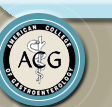 |
|

|
| Upper
Endoscopy (EGD)
Esophagogastroduodenoscopy
(EGD), also known as Upper Endoscopy, is a procedure that enables
the physician to perform a visual examination of the esophagus,
stomach, and duodenum (first part of the small intestine). A thin,
flexible instrument known as an endoscope (or gastroscope) is
introduced through the mouth and into the swallowing tube, or
esophagus. This procedure is used to identify the cause of swallowing
difficulties, nausea, vomiting, reflux, indigestion, abdominal
pain, or chest pain.
EGD
allows the physician to view abnormalities, like ulcers or tumors,
which do not show up well on x-rays. Other advantages include
the ability to remove small tissue samples (biopsies) or obtain
some cells with a fine brush (cytology), which can be sent to
the laboratory for microscopic examination. The endoscope can
also be used to treat certain digestive conditions, such as stretching
areas of narrowing within the esophagus, removing benign growths
or polyps, and controlling gastrointestinal bleeding.
|
|
Colonoscopy
Colonoscopy
is a procedure that enables the gastroenterologist to examine
the inside of the large colon, from the lowest part (the rectum)
up through the colon to the lower end of the small intestine.
This is accomplished by inserting a thin, flexible instrument,
known as an endoscope, into the anus and then advancing it slowly
into the rectum and through the colon. It is performed with visual
control by either looking through the instrument or viewing a
TV monitor. Because the endoscope is flexible, it can be bent
to conform to the curves of the large intestine. This procedure
is usually performed to diagnose unexplained changes in bowel
habits, to investigate the finding of blood in the stool, and
also for early detection of cancer in the colon and rectum. Colonoscopy
allows the gastroenterologist to observe inflamed areas of tissue,
bleeding, abnormal growths, and muscle spasms.
If
anything unusual, such as inflamed tissue or polyps, is observed
during the examination, a forceps can be passed through the scope
and a small sample of tissue, or biopsy, removed and sent to the
laboratory for analysis. If a bleeding site is identified, this
can be controlled by several means, including laser, special probes,
or medication. Polyps (small, benign growths that can lead to
cancer) can usually be removed during an endoscopic procedure.
Early removal of these polyps is an important method of preventing
colorectal cancer.
|
|
Small
Intestinal Endoscopy
Small
intestine endoscopy enables the gastroenterologist to examine
the inside of the distal duodenum and major portion of the jejunum
by extra flexible enteroscope used in conjunction with a special
overtube. The overtube has low-friction characteristics, which
allows the enteroscope to pass down without the intragastric looping.
This procedure is used to identify the cause of gastrointestinal
bleeding obsure in origin or to view small intestinal abnormalities
like tumors.
The
exam allows the physicians to biopsy lesions for microscopic examination
and can also be used treat bleeding lesions by endoscopic various
modalities. The whole small intestine can be accurately examined
by "capsule endoscope" or (still investigational) at laparotomy
(intraoperative). Intraoperative exam may be performed by the
mouth, by a surgical enterostomy or by the anal canal. Counter
pressure is applied by the surgeon to straighten out acute angles
and to prevent large loops during this procedure.
Capsule Endoscopy
Capsule Ensocopy enables your doctor to examine the three portions (duodenum, jejunum, ileum) of your small intestine. Your doctor will use a vitamin-pill sized video capsule as an endoscope, which has its own camera and light source. While the video capsule travels through your body, images are sent to a data recorder you will wear on a waist belt. Most patients consider the test comfortable. Afterwards, your doctor will view he images on a video monitor.
Capsule Endoscopy helps your doctor determine the cause for recurrent or persistent symptoms such as abdominal pain, diarrhea, bleeding or anemia, in most cases where other diagnostic procedures failed to determine the reason for your symptoms. In certain chronic gastointestinal diseases, the method can help to evaluate the extent to which your small intestine is involved or to monitor the effect of therapeutics. Your doctor might use Capsule Edoscopy to obtain motility data such as gastric or small bowel passage time.
|
|
ERCP
Endoscopic
retrograde cholangiopancreatography, also known as ERCP, is a
diagnostic procedure used to examine the duodenum, bile ducts,
gall bladder, and pancreas. A thin, flexible instrument known
as a duodenoscope is inserted through the mouth, down the esophagus
into the stomach and duodenum (first part of small intestine).
Once the physician has positioned the duodenoscope appropriately,
a dye (contrast media) is injected through the instrument into
the bile ducts and/or the pancreatic duct. X-rays can then be
taken of these areas. ERCP is used in diagnosing and treating
gallstones, blockages of the bile ducts, jaundice, upper abdominal
pain, unexplained weight loss, and cancer of the pancreas or bile
duct.
If
the examination identifies the presence of a gallstone or narrowing
of the bile ducts, instruments can be inserted into the duodenoscope
to remove or work around the obstruction. If the physician views
an abnormality, a small sample of tissue (biopsy) can be removed
through the instrument. Also, using electrocautery (electric heat)
the physician can perform small incision to biliary and/or pancreatic
sphincters. Biliary and pancreatic stenting can be performed in
selected cases.
Laser
Treatment
The
neodymium-YAG laser tumor destruction in the esophagus or rectum/colon
is used for palliation for inoperable tumors. The laser tumor
destruction is usually applied from below to upwards using high
energies in pulses of 2 seconds or more. Contact and noncontact
laser photoablation in which energy is rapidly transferred from
the laser beam for tumor destruction. The palliative effort of
the laser treatment lasts few weeks to few months, and further
sessions may be required. It may be necessary to place a stent
if recurrence is rapid.
Photodynamic
therapy (PDT), "smart laser" can be used to treat in patients
with Barrett's precancerous (dysplastic) lesions and Barrett's
superficial cancers. PDT starts with an injection into your vein
of a drug called, Photofrin. Two days after the drug injection,
you will have an endoscopy of your esophagus. A special light
through an optic fiber will be inserted to light up the diseased
area with red light. The red light comes from a low-powered laser
and activates the drug in the diseased tissue for selective destruction
of Barrett's segment. Two days after you received the PDT, you
will have another endoscopy to inspect the diseased area of the
esophagus for reaction to PDT. Whether you receive another light
treatment, depends on how your esophagus reacted. You will have
a visit every 3 or 6 months after you receive the PDT treatment.
You may have an endoscopy of the esophagus and biopsies will be
taken for microscopic examination as before. Depending on the
biopsy results, you may undergo further tests or treatment.
|
|
 |







